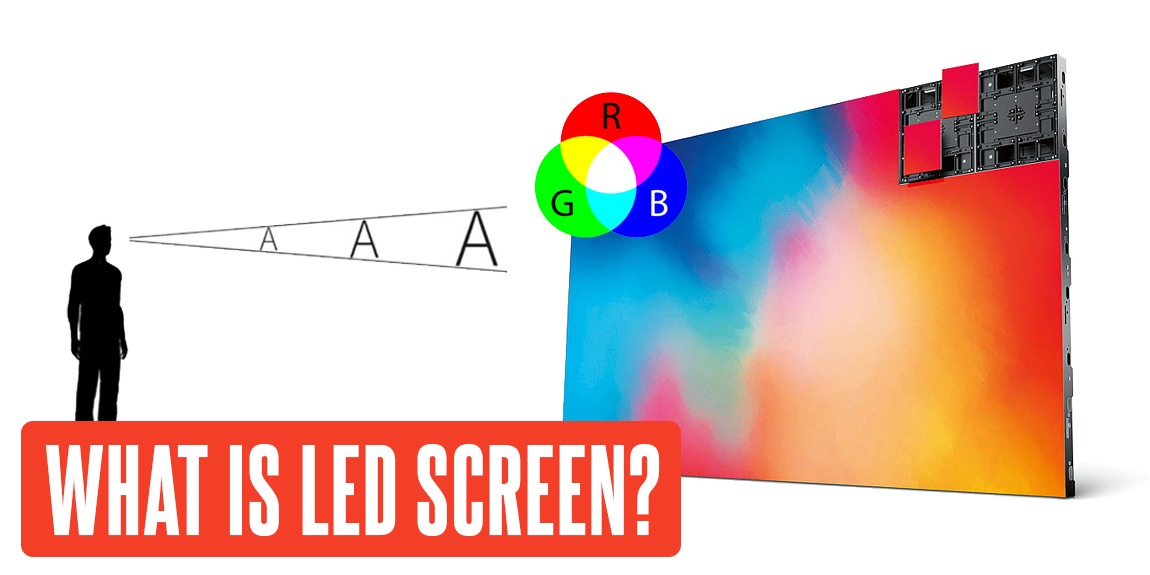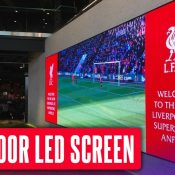
WHAT IS LED SCREEN?
What is LED? LED is the abbreviation of “Light-Emitting Diode”. An LED emits light as a result of electrical luminescence. Unlike the old-style bulbs, LED technology is also called cold light because the light is not obtained by heating the metal. The diode emits light while passing through the specially produced silicon. And this method is more efficient and more economical at the same time. The fact that LEDs are made of solid materials and covered with transparent plastic prevents heating and provides high durability. It also minimizes the cooling problem. How LED Panel and LED Display Work An LED screen is formed by combining LED panels of certain sizes. The LED panel, on the other hand, consists of many LEDs close to each other. The brightness of each LED changes according to the data coming from the control card, and the diodes together form an image on the screen. New colors are created by mixing different colors of light to create a bright and lively image. An LED panel consists of red, green and blue LEDs mounted in a standard arrangement. These three colors combine to form a pixel. By adjusting the light intensity of the diodes, billions of colors can be created. When looking at LED screens from a distance, colored pixels are seen as an image. What is RGB? / What is SMD? RGB: an abbreviation for red, green, and blue. All colors that appear on LED screens are obtained by mixing these three basic colors. SMD are electronic components that are mounted directly on the printed circuit board, not by soldering metal leads to the circuit board. In LED display technology, red, green and blue diodes are placed in a small plastic capsule. Since the diodes are placed in the capsules in this way with SMD technology, they take up much less space and thus less space can be found between the pixels. And in this way, it is possible to produce high resolution screens. How is LED Display Power Consumption? LED is a technology with high energy efficiency. The amount of power used by the diodes in the LED display depends on the size, brightness and usage of the display. There are many different types of LED displays. For example, the power consumption of Indoor LED Display will be different and less than that of Outdoor LED Display operating under direct sunlight. The brightness of the LED Screens and the colors of the images broadcast on the screen are another factor that affects the power consumption. How Long Do LED Displays Last? Since there are many factors, it is difficult to say an exact time about the life of the LED display. However, the lifetime of an LED display that is produced with the right quality and maintained regularly is more than ten years. As with all electronic products, the lifespan of LED displays varies according to daily use, maintenance and environmental effects. LED Display displays bright colors, and high brightness wears the LED display more than low brightness. The lifetime of LED diodes and the transmitted light intensity will also decrease over time depending on the quality and type of diodes. Finally, the humidity and salt rate in the air also affects the life of LED Displays, albeit slightly. What is LED Display Pixel Pitch and Resolution? In an LED Display, the distance between the diodes determines the resolution of the display. Each group of diodes reflecting red, green and blue colors is called a pixel. The distance in mm between two adjacent LED diodes is also known as the pixel pitch. If the pixel pitch of an LED screen is 10 mm, this LED screen is called P10 LED screen. For example, if an LED screen is created with a height of 96 cm and a width of 96 cm, this means that there are 96×96: 9216 pixels on this LED screen. In other words, it can be called a screen with a resolution of 96 x 96 pixels. The pixel pitches of outdoor led screens are higher than indoor led screens. Because while outdoor led screens are viewed from a distance, indoor led screens are viewed closely. Which Resolution Should I Choose on the LED Display? The resolution you need for an LED Display depends on the closest viewing distance. While a low resolution LED screen may appear clear from afar, it will be difficult to see what’s on the screen up close. Low-resolution screens are preferred when installing outdoor led screens on the edges of main roads or building facades. Because the viewing distance is far, the LED screen image is clear. High resolution should be preferred if the indoor LED screen to be installed inside a store or on the showcase. Because the viewer will look closely and at eye level. In fact, the biggest criterion that determines LED screen prices is resolution. Since the distance between the diodes is less in high resolution LED screens, there are more pixels and therefore the square meter prices are higher.



